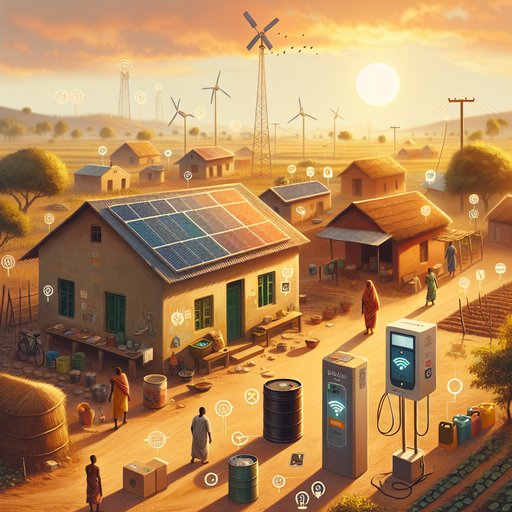
Extending reliable, affordable, and clean electricity to underserved communities is one of the most practical levers for climate progress and human development. Microgrids, pay-as-you-go solar, and community energy projects are reshaping how power is generated, financed, and governed, reaching places where traditional grids stall or cost too much to extend. These approaches blend proven technologies with new business models and digital tools, helping households replace kerosene and diesel while enabling schools, clinics, farms, and small enterprises to thrive. Their success depends on thoughtful design and fair regulation, but the momentum is real: energy access is no longer an either/or choice between central grids and candles, it is a portfolio of solutions that can scale, interoperate, and endure.
Clean energy access sits at the intersection of climate risk, public health, and inclusive growth, making it central to today’s global energy challenge. Hundreds of millions of people still lack reliable electricity, and many more face frequent outages that limit education, healthcare, and livelihoods. At the same time, fossil-based stopgaps lock in pollution and volatile fuel costs. Solutions that deliver resilient, low-carbon power at the edge—without waiting for long grid extensions—offer a way to accelerate development while keeping emissions in check.
Microgrids embody this edge-of-grid strategy by combining solar photovoltaics, batteries, smart inverters, and sometimes small wind or backup generators into a self-contained network. Modern controllers balance supply and demand in real time, manage battery health, and prioritize critical loads such as clinics or cold chains. Because they can be right-sized and expanded in stages, microgrids fit island communities, remote villages, and peri-urban neighborhoods where demand grows quickly. When designed with reliable service tiers and transparent tariffs, they deliver grid-quality power that underpins businesses, refrigeration, and digital connectivity.
Economically, the strongest microgrids anchor their revenue with steady customers while cultivating productive use among households and enterprises. Telecom towers, schools, or water systems provide predictable demand that improves the project’s bankability; daytime loads like milling, irrigation, and workshops lift utilization and spread fixed costs. Results-based finance and concessional capital can bridge early-stage risks, while performance-based contracts align incentives for uptime and service quality. Clear rules for interconnection and compensation if the main grid arrives protect investors and customers, reducing the fear of stranded assets.
Pay-as-you-go solar leverages mobile payments and embedded technology to bring electricity home by home, even where incomes are irregular. Customers make small, flexible payments to unlock a solar home system that powers lights, phone charging, radios, and efficient TVs or fans, with the option to upgrade over time. Smart metering and remote disconnection reduce default risk, letting providers serve customers who lack formal credit histories. As households replace kerosene and disposable batteries, they gain better light, lower indoor air pollution, and more disposable income for education and healthcare.
The PAYGo model works best when paired with consumer protection and technical quality standards that ensure durability and honest pricing. Transparent total cost of ownership, clear warranties, and accessible after-sales service build trust and uptake. Public programs that remove import duties on quality-verified products, and that support local distributors and technicians, help shift markets from informal to reliable supply. With these guardrails, PAYGo finance can serve as a stepping stone to larger systems and even build a record of timely payments that unlocks other financial services.
Community energy projects add a governance layer that strengthens social license, local jobs, and long-term stewardship of assets. Cooperatives and shared-ownership solar arrays allow households and small businesses to subscribe to a nearby project and receive bill credits, expanding access to renters and those with shaded roofs. In rural mountainous regions, community-managed micro-hydro and hybrid systems provide dependable baseload and seasonal storage, complementing solar production. Revenue-sharing and participatory planning align projects with local priorities, from electrifying health posts to powering agro-processing.
Scaling these approaches requires interoperable technology, pragmatic policies, and blended finance that crowds in private capital without burdening end users. Open data and smart meters help providers manage fleets of systems and inform regulators about performance and affordability. Clear mini-grid licensing, standards for safety and interconnection, and predictable tariff-setting frameworks reduce transaction costs and enable portfolio financing. When central utilities view microgrids and community projects as partners—through franchise models, grid-ready designs, or buy-out formulas—expansion becomes a coordinated pathway rather than a zero-sum encounter.
Looking ahead, the greatest gains will come from pairing access with productive use, circularity, and skills. Efficient appliances, cold chains, e-mobility charging for two- and three-wheelers, and solar-powered irrigation turn kilowatt-hours into income and resilience, improving repayment and community buy-in. Building local supply chains for installation, repair, and battery refurbishment reduces downtime and keeps value in the community, while e-waste rules and take-back programs address end-of-life impacts. With thoughtful policy, finance that rewards performance, and communities in the driver’s seat, clean energy access can move from pilot projects to durable infrastructure that expands opportunity and cuts emissions.





















































